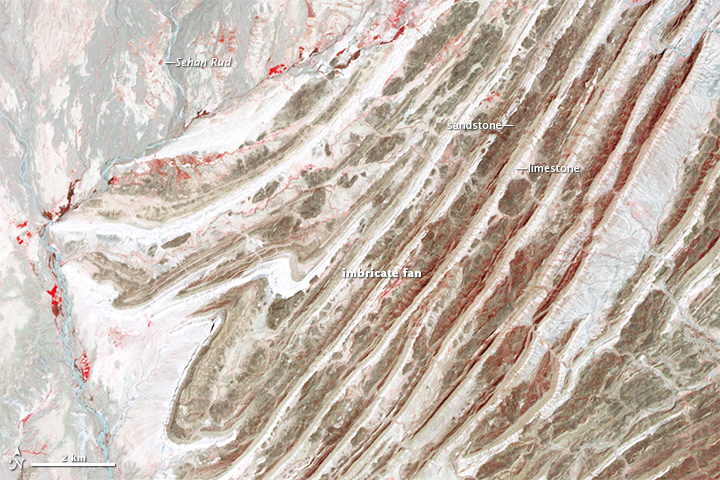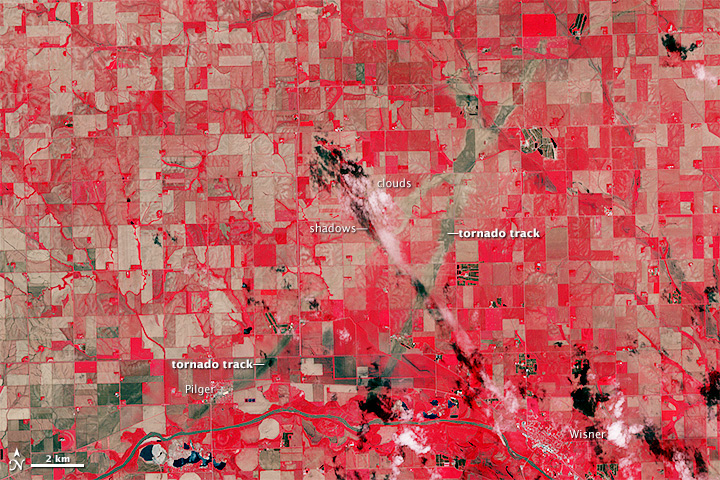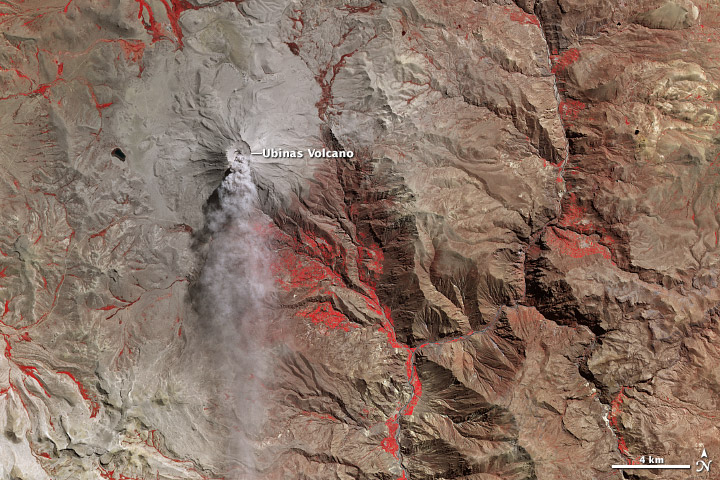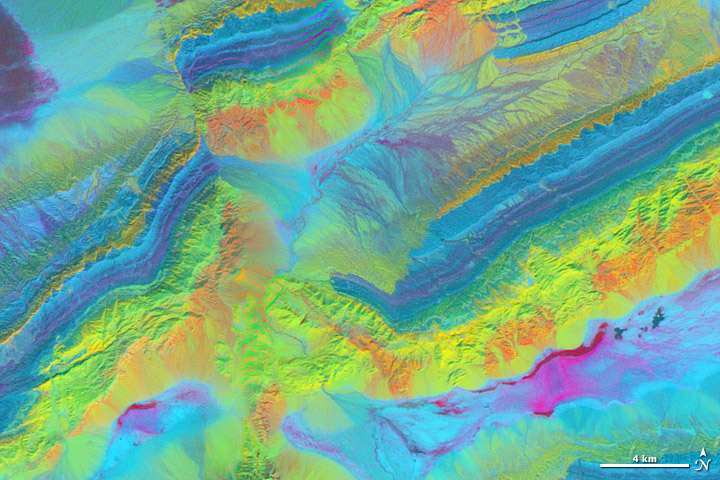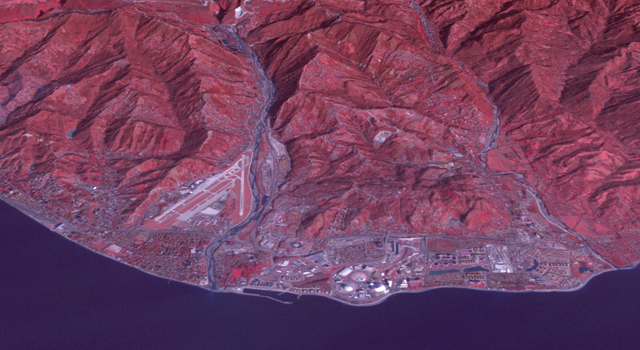While not as high as the Himalayas or Karakoram, the Sulaiman range boast some of the most complex tectonic structures in the world. As India moved northward, it began to rotate in a counter-clockwise direction, wrenching the northwestern part of the Indian plate backwards into part of the Eurasian plate. The countervailing forces put the rocks of the Sulaiman range in a unique compressional vice, causing many of its faults to curve and stretch in convoluted ways.
The Advanced Spaceborne Thermal Emission and Reflection Radiometer (ASTER) instrument on NASA’s Terra satellite captured a scene on April 24, 2011, that highlights some of this tectonic complexity. Read more
NASA Earth Observatory image by Robert Simmon and Adam Voiland, with data courtesy of NASA/GSFC/METI/ERSDAC/JAROS, and the U.S./Japan ASTER Science Team. Caption by Adam Voiland.


